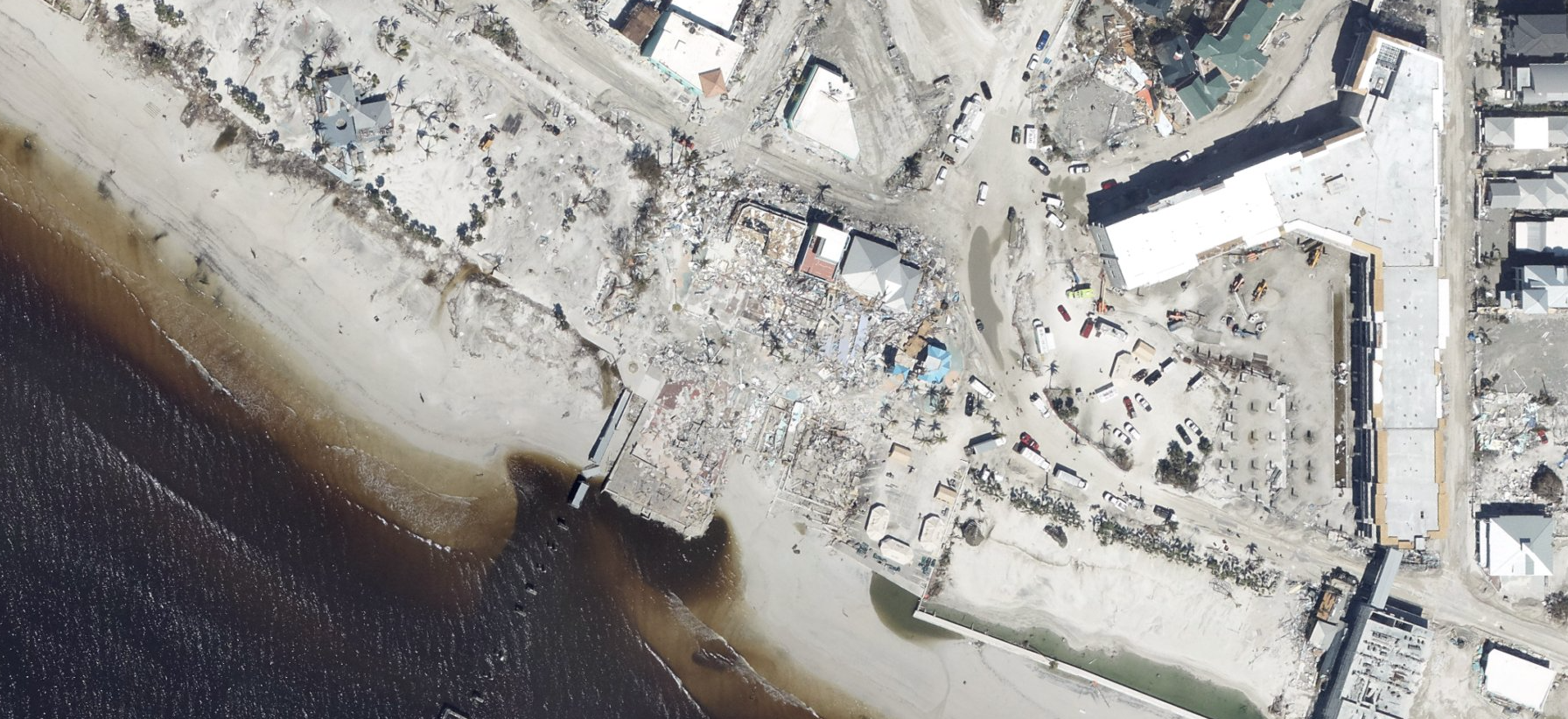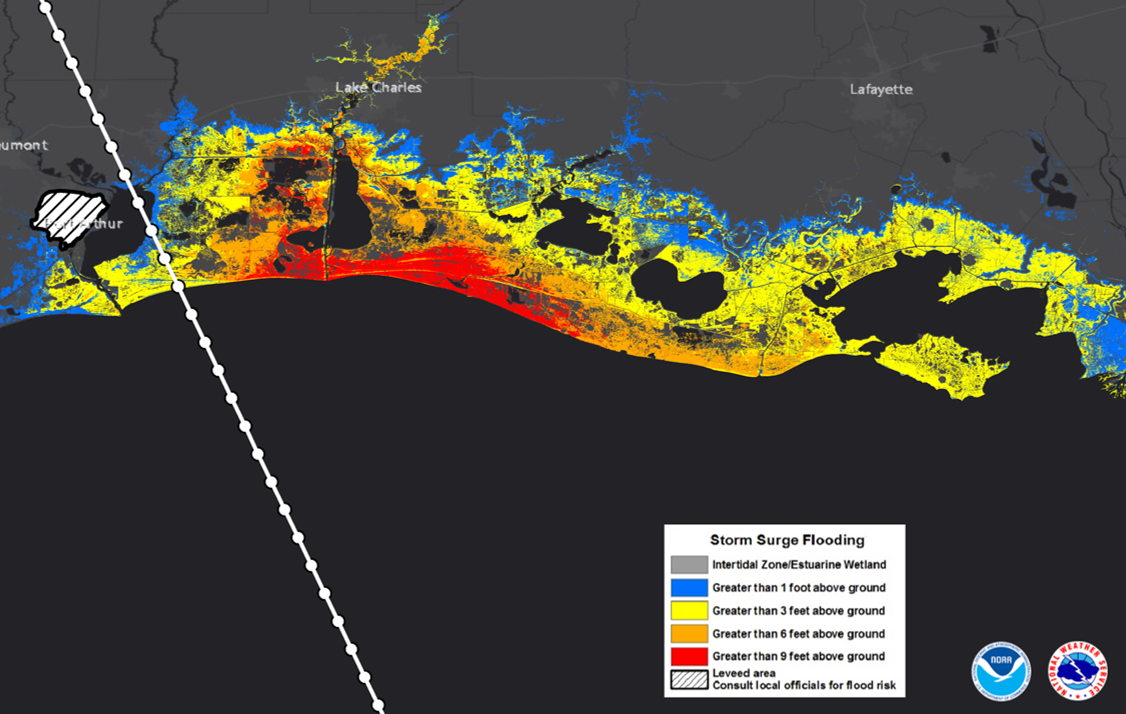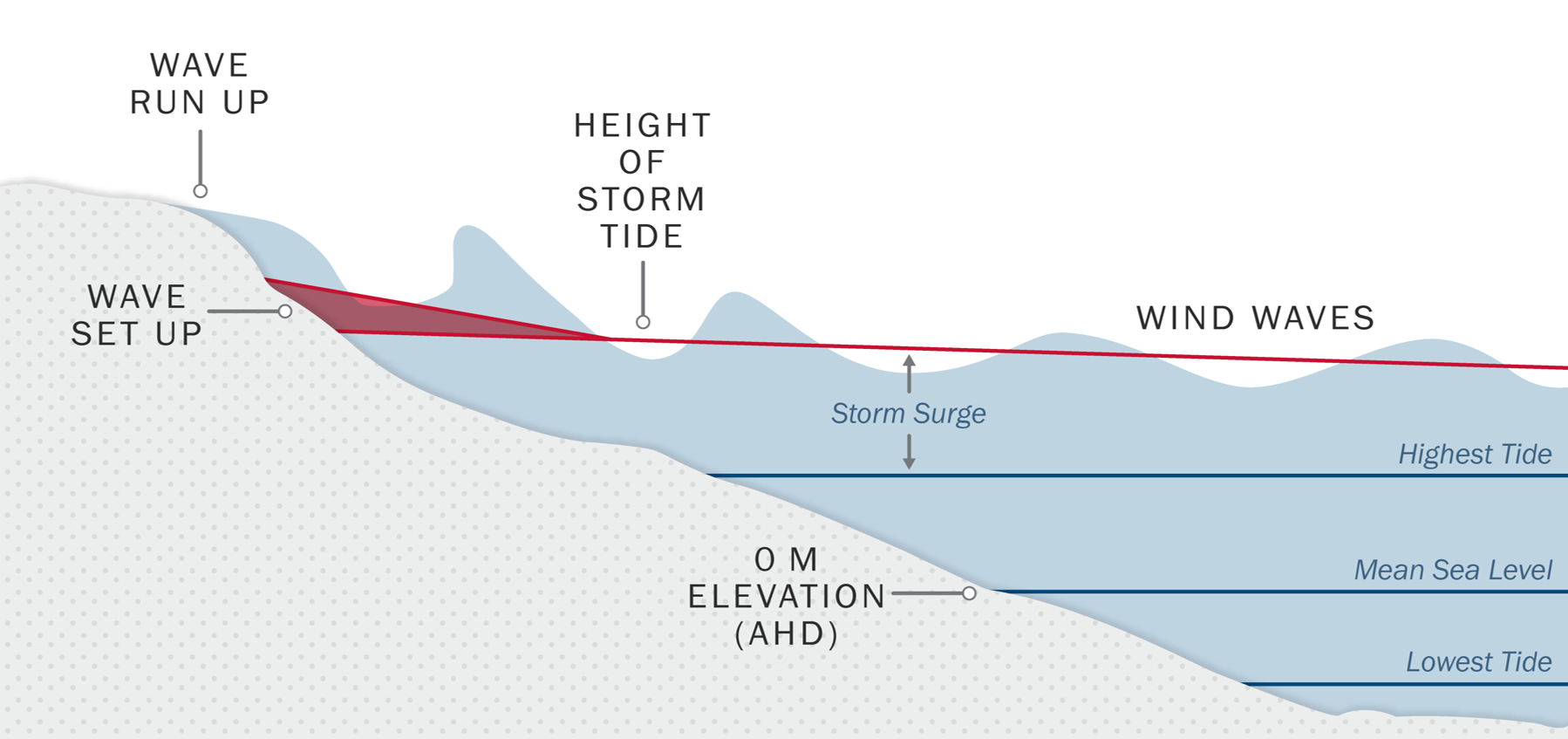Storm Surge Overview
Storm Surge Unit | Surge Overview | National Surge Hazard Maps | International Surge Viewer | Operational Products | Resources
Contents
- Introduction
- What is Storm Surge?
- What Causes Storm Surge?
- Factors Impacting Surge
- Total Water Level
- Storm Surge can be Dangerous or Life-Threatening
- Notable Surge Events
Introduction
Storm surge from tropical cyclones poses a significant threat to life and property along the coast and is currently the leading cause of fatalities from hurricanes. All locations along the U.S. East and Gulf coasts are vulnerable to storm surges. Storm surge can even travel up rivers and canals, reaching well inland from the coastline. The impacts from Hurricane Ian (2022) are a reminder of the widespread devastation storm surge can cause, attributing to 41 lives lost. Awareness of the destructive potential of storm surge is crucial for improving safety and resilience in coastal communities.
Aerial imagery from NOAA's National Geodetic Survey of damage in the Times Square district of Fort Myers Beach, FL, after Category 4 Ian struck the area.
What is Storm Surge?
Storm surge is an abnormal water level rise generated by a storm over and above the predicted astronomical tide. Storm tide is the water level rise due to the combination of storm surge and the astronomical tide. This rise in water level can cause extreme flooding in coastal areas, particularly when storm surge coincides with normal high tide, resulting in storm tides reaching up to 20 feet or more in some cases. However, to avoid confusion, "storm surge" is used interchangeably. Keep in mind neither definition includes wave action occurring on top of the surge, which can add additional feet to the overall water level.
Storm Surge vs. Storm Tide
What Causes Storm Surge?
Storm surge is primarily caused by the strong onshore winds of a hurricane or tropical storm. The wind circulation around the eye of a hurricane causes a vertical circulation in the ocean. While in deep water, there is no indication of storm surge because there is nothing to interfere with this circulation. However, once the storm reaches the shallower waters near the coast, the vertical circulation is disrupted by the ocean bottom. The water can no longer move downward, so it begins to move upward and inland, resulting in storm surge.Factors Impacting Surge
The maximum amount of storm surge for a particular location depends on several factors. Storm surge is a very complex phenomenon because it is sensitive to the slightest changes in storm intensity, forward speed, size (radius of maximum winds), angle of approach to the coast, and the shape and characteristics of the coastline. Below are examples of these factors and a hypothetical storm surge flooding graphic representing where inundation occurred and how high the water reached in the simulation.
- Storm Intensity (Wind Speed)
-
Stronger winds will produce a higher storm surge. The two images below show potential storm surge inundation from two different storm intensities:
A Category 2 storm on the left and a Category 3 storm on the right.


- Forward Speed
- While a faster storm will produce a higher surge at the immediate coastline, a
slower storm will produce a surge that penetrates farther inland. The two
images below show the surge generated by two hypothetical hurricanes hitting the western
Louisiana coast: The faster storm is on the left, and the slower storm is on the right.


- Size (Radius of Maximum Winds)
- A larger storm will produce a higher surge. There are two reasons for this. First, the winds in a larger storm
push on a larger ocean area. Second, the strong winds in a larger storm will tend to affect an area longer than
in a smaller storm.
Surge animation of a small storm vs. a large storm pushing water (Click on image to play video)
- Angle of Approach
- The angle at which a storm approaches a coastline can affect the amount of storm surge pushed over land.
A storm that moves onshore perpendicular to the coast is more likely to produce a higher storm
surge than one that moves parallel to the coast or inland at an oblique angle. The image on the left shows a storm approaching
at an angle; however, the image on the right shows a storm approaching nearly perpendicular to the coastline. Areas highlighted in
red and orange increase around Staten Island and along the banks of the Hudson River between New Jersey and New York.


- Width and Slope of the Ocean Bottom
- A wide, gently sloping continental shelf will allow for a higher storm surge. In contrast,
a narrow, steeply sloping shelf will allow more difficulty creating storm
surge. Areas along the Gulf Coast, especially Louisiana and Mississippi, are particularly
vulnerable to storm surge because the ocean floor gradually deepens offshore.
Conversely, areas along Florida's southeast coast have a shelf that drops off very quickly, making it less vulnerable to storm surge.
Surge animation of a steep continental shelf vs a gently sloping continental shelf (Click on image to play video)
- Shape of the Coastline and Local Features
- Storm surge will be higher when a storm makes landfall on a concave coastline
(curved inward, such as Apalachee Bay in Florida) than a convex coastline (curved
outward, such as the Outer Banks of North Carolina). Storm surge is also highly dependent on
local features and barriers that affect the flow of water. A good example is the coast of
North Carolina, which has complex features such as barrier islands, inlets, sounds, bays, and rivers.

Total Water Level
In reality, storm surge only makes up a part of what causes water levels to rise along the coast during a hurricane. Tides, wave setup, and freshwater flow all contribute to the total water level rise.
Storm Surge can be Dangerous or Life-Threatening
Adding to the destructive power of surge, battering waves may increase damage to buildings directly along the coast. Water weighs approximately 1,700 pounds per cubic yard; extended pounding by frequent waves can demolish any structure not specifically designed to withstand such forces. The two elements work together to increase the impact on land because the surge allows waves to extend inland.Additionally, currents created by tides combine with the waves to severely erode beaches and coastal highways. Buildings that survive hurricane winds can be damaged if erosion undermines and weakens their foundations. In confined harbors, the combination of storm tides, waves, and currents can also severely damage marinas and boats. Saltwater intrusion in estuaries and bayous endangers public health, kills vegetation, and can send animals, such as snakes and alligators, fleeing from flooded areas.


Notable Surge Events
- Hurricane Ian 2022 Tropical Cyclone Report
- Hurricane Ida 2021 Tropical Cyclone Report
- Hurricane Laura 2020 Tropical Cyclone Report
- Hurricane Michael 2018 Tropical Cyclone Report
- Hurricane Irma 2017 Tropical Cyclone Report
- Hurricane Matthew 2016 Tropical Cyclone Report
- Superstorm Sandy 2012 Tropical Cyclone Report









